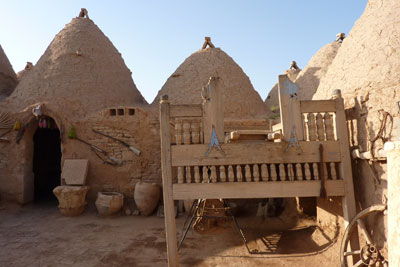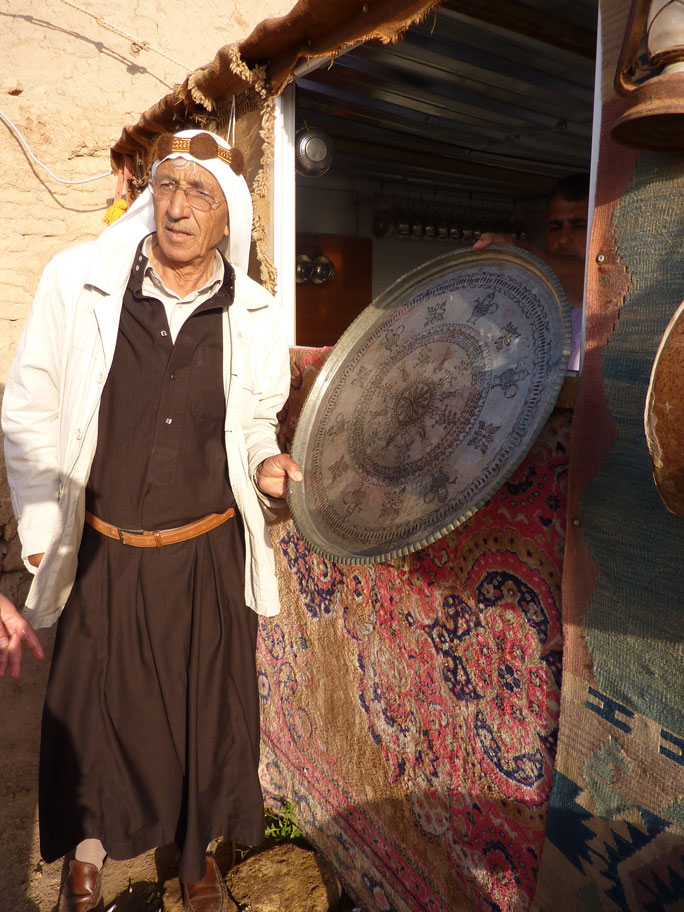
Harran: Beehive Houses and Armenian Inlaid Trays
About an hour’s drive south of the city of Urfa, you’ll reach the village of Harran, just this side of the Syrian border. Here you’ll find the remains of ancient Harran, a major commercial, cultural and religious center first inhabited in the Early Bronze Age (3rd millennium BC).
They say that the remains of the world’s first Islamic university, Ulu Camii are here, and the tourists come flocking across the plains to see what’s left.
 Probably the most striking feature of Harran, the village, are the beehive type structures built of mud and hay. Some people still live in these structures, though many have been converted into stables. Some are on the verge of collapsing.
Probably the most striking feature of Harran, the village, are the beehive type structures built of mud and hay. Some people still live in these structures, though many have been converted into stables. Some are on the verge of collapsing.
Our escort Ferzan said that the local government had convinced residents that tourist would come to the village and spend much needed cash to get a glimpse of the strange looking dwellings.
I met a man called Halil who has been living in a beehive house for the past 40 years. The house itself is 260 years old. The homes are warm in the winter and cool in the scorching heat of the summer.
The man has 8 sons and 6 girls – fortunately the house itself has 18 small rooms.
The one room with rugs is meant to entertain guests in. It’s also where meals are taken. There is also a separate room where the bride is clothed and groomed before being taken away by the groom’s family.
I was told there are 380 such houses in Harran, with a population of some 10,000; a mixture of Turks, Kurds, but mostly ethnic Arabs. Most of the indigenous Assyrians have since moved away.

Hail said that 10,000 tourists visit the village each year, including some Armenians.
When we told him that we were from Armenia, he rushed inside to show us some Armenian-made trays which he displays inside. The family also serves meals on them.
Halil said the trays had been brought from Urfa (Urha in Armenian) and that they were 100-200 years old.
Our host said there were only three places in the world where such houses exist – Turkey, Syria and Italy. Yes, Italy.
As the story goes, back in 1951 an Italian tourist visited Harran and decided to build similar homes back in Italy; to attract tourists.
Halil, who also works at the Turkish Ministry of Tourism, lets visitors try on the colorful Arabic garb for photo-taking.
He doesn’t charge that much for the experience.
 Videos
Videos Photos
Photos




Comments (1)
Write a comment